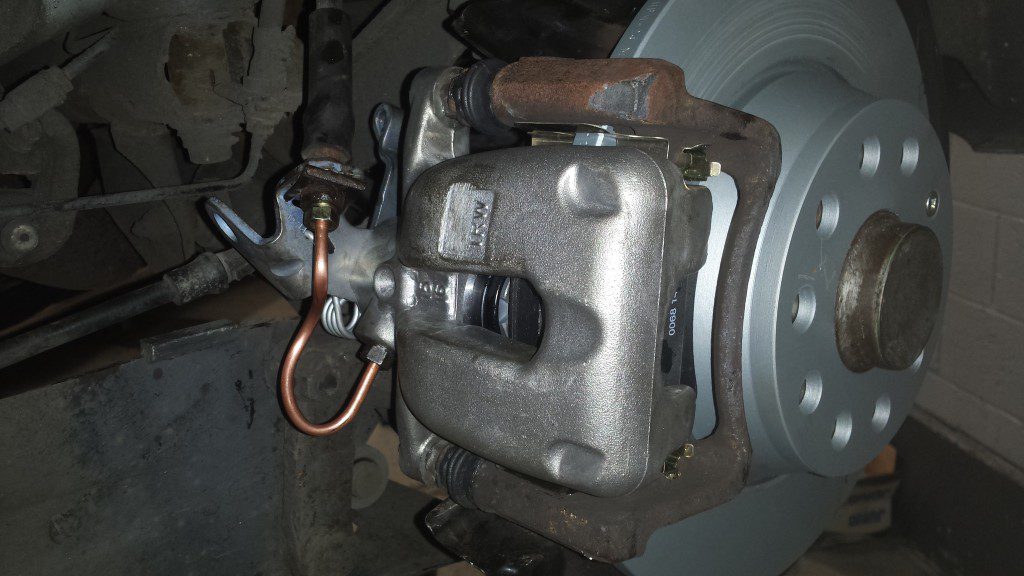When Does Brake Fluid Need To Be Replaced

Brake fluid, the unsung hero of your braking system, is a crucial component often overlooked in routine maintenance. While many focus on pad thickness and rotor condition, the state of your brake fluid is equally vital for safe and effective stopping power. Understanding when and why to replace it is paramount for both performance and longevity of your entire braking system. Unlike engine oil, brake fluid doesn't get "dirty" in the traditional sense, but its performance degrades over time due to a different, equally insidious threat: moisture.
The Hygroscopic Nature of Brake Fluid: A Silent Killer
Most commonly used brake fluids, like DOT 3, DOT 4, and even some DOT 5.1 fluids, are hygroscopic. This means they readily absorb moisture from the atmosphere. This absorption happens gradually, through microscopic pores in brake lines, seals, and even the reservoir cap. While a seemingly small amount of water might not seem significant, its impact on brake system performance can be dramatic.
Water contamination lowers the boiling point of the brake fluid. Brake systems generate considerable heat during operation, especially under hard braking or prolonged downhill driving. When the brake fluid boils, it creates compressible vapor bubbles within the lines. These bubbles drastically reduce the hydraulic pressure transmitted from the master cylinder to the calipers, resulting in a spongy brake pedal feel and reduced stopping power. This phenomenon, known as vapor lock, can lead to brake failure in extreme cases.
Recommended Replacement Intervals: General Guidelines and Caveats
General recommendations for brake fluid replacement vary depending on the vehicle manufacturer and the type of brake fluid used. However, a good rule of thumb is to replace your brake fluid every two to three years, regardless of mileage. Some manufacturers specify mileage-based intervals (e.g., every 30,000 miles), while others emphasize time. Always consult your vehicle's owner's manual for the manufacturer's specific recommendations.
It's crucial to understand that these are just guidelines. Several factors can accelerate moisture absorption and necessitate more frequent fluid changes. These include:
- Climate: Humid environments significantly increase the rate of moisture absorption.
- Driving Style: Aggressive driving and frequent hard braking generate more heat, accelerating fluid degradation.
- Vehicle Age: Older vehicles with aging seals and brake lines are more susceptible to moisture intrusion.
Testing Brake Fluid: Identifying the Need for Replacement
While time-based intervals are a good starting point, the best way to determine if your brake fluid needs replacing is to test it. Two primary methods are commonly used:
- Boiling Point Testers: These devices measure the boiling point of the brake fluid. A significant drop in boiling point indicates excessive moisture contamination. These testers are widely used in professional automotive shops.
- Brake Fluid Tester Pens: These are less precise but offer a quick and easy way to assess fluid condition. They measure the electrical conductivity of the fluid. Water increases conductivity, providing an indication of moisture content. While less accurate than boiling point testers, they are suitable for DIY enthusiasts and quick checks.
Ideally, you should aim for a boiling point that meets or exceeds the dry boiling point specification for your fluid type. The "dry boiling point" refers to the boiling point of the fluid when it's brand new and completely free of moisture. Even more importantly, ensure it well exceeds the "wet boiling point" specification - this is the boiling point of the fluid when it has absorbed a certain percentage of water (typically around 3.7%). Falling below the wet boiling point is a clear indicator that the fluid needs immediate replacement.
Choosing the Right Brake Fluid: DOT Standards and Compatibility
Selecting the correct brake fluid is essential. DOT 3, DOT 4, and DOT 5.1 are glycol-based fluids, and in many cases, DOT 4 can be used in place of DOT 3 (check your owner’s manual). However, never mix glycol-based fluids with DOT 5, which is silicone-based. DOT 5 is typically used in vehicles that require a fluid that won't damage paint, and it's not compatible with ABS systems designed for glycol-based fluids.
When replacing brake fluid, always use the type recommended by the vehicle manufacturer. Upgrading to a higher DOT number within the glycol-based family (e.g., from DOT 3 to DOT 4) can offer slightly improved performance due to a higher boiling point, but ensure compatibility and that the system is properly flushed. Furthermore, remember that even the "best" brake fluid will eventually degrade and require replacement. Regular testing and adherence to recommended maintenance schedules are key to maintaining a safe and reliable braking system.
